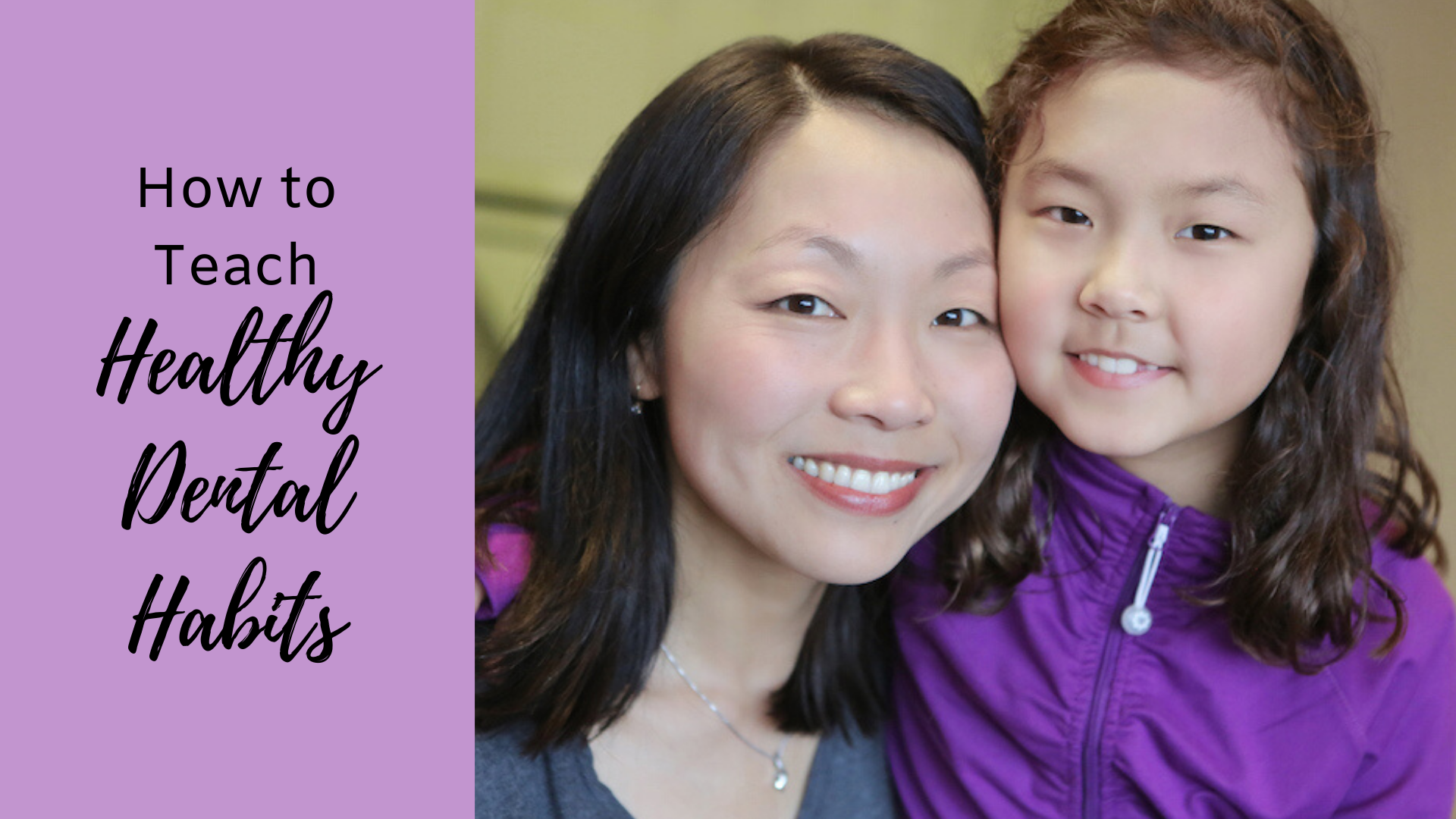
Did you know tooth decay is the #1 chronic health issue affecting kids 6-19 today? Luckily, tooth decay is preventable, which is why it’s never too early to start teaching kids how to take care of their teeth. Establishing a healthy routine not only prevents problems now, but it also sets up kids to become healthy adults.
In this month’s post, we’ll give you our best advice and tips for teaching healthy dental habits to kids — and how to get those habits to stick! By the end, you’ll feel confident and ready to help your kids care for their teeth, but don’t hesitate to give us a call if you have more questions. We’d love to help.
Set a good example
Kids learn by watching adults, and young kids naturally want to emulate the behaviors of adults they trust. That’s why the first and easiest way to begin teaching kids healthy dental habits is to practice them yourself!
A good routine starts with flossing daily and brushing twice a day with a soft-bristled toothbrush and fluoride toothpaste.
Establish healthy routines and start early
As soon as kids are able to brush and floss by themselves, start a daily routine. It’s great if you can brush your teeth together with them every day after breakfast and before bed. This way you’re setting a good example and enforcing the routine.
You can also make it more fun for little kids by incorporating games and rewards:
- Find a good 2 to 3 minute song to play while they brush (that’s the length of time we should all be brushing our teeth).
- Set up a dental care calendar where kids can place a sticker or draw a star every time they brush.
- Offer rewards when your child follows the routine. It could be as simple as enjoying their favorite book or movie as soon as brushing and flossing are done.
- Let kids know you’re proud of them for working hard to make their health a priority.
Teach good brushing and flossing technique

While you’re helping your kids create healthy habits, it’s important to show them how to brush and floss properly. Here are some tips:
- Teach kids to brush along the gumline using short, gentle circular or vertical motions.
- Supervise young kids to make sure they’re holding their toothbrush properly.
- Floss picks are sometimes easier for smaller and less coordinated hands.
- Choose age-appropriate dental products (smaller children need child-specific toothbrushes and toothpaste).
- Avoid strongly flavored toothpastes, since kids’ mouths are more sensitive.
- Stock the bathroom with plenty of toothpaste, floss, and replacement toothbrushes.
- Replace their toothbrush every 2-3 months.
Make health a family discussion topic
As kids get older, understanding the rationale behind their healthy routines often helps them stay motivated. Consider covering topics like:
How cavities form
The bacteria in your mouth turn sugar from food and drinks into acid. The acid and bacteria eat away at your teeth, causing cavities to form. Some foods have acids in them (citric) which directly affects teeth and can accelerate cavity formation.
Why flossing is so important
A common place for tooth decay is between the teeth, and flossing is the best way to clean these hard-to-reach areas. Studies also show that flossing (along with brushing) reduces gingivitis.
How your mouth affects your whole body
Many people don’t realize how much of an impact oral health has on overall health. Good dental health goes a long way towards preventing many serious diseases. Gum disease, for example, has been linked to:
- Cancer
- Diabetes
- Heart disease
- Lung infections
- Hypertension
- Alzheimer’s
What does a dentist do?
When talking to kids about the dentist, try to be positive and take the fear out of dental appointments as much as possible. You can also help make sure your child has good early experiences by choosing a dentist who is patient, gentle, and good with kids.
The importance of a nutritious diet
As important as brushing and flossing are, they’re not enough to combat a poor diet. The best diet for a healthy mouth is one that’s low in sugary and acidic foods. Avoid soda, candy, and sugary snacks. Limit things like fruit juice and raisins. One idea is to let kids participate in family meal planning. This gives them a chance to learn how to eat well and talk to you about which healthy foods they like and don’t like.
Remember that kids of different ages have different needs

Although the basics stay essentially the same, our dental needs evolve throughout our lives. Everyone is unique, but different stages of childhood typically require different approaches.
Infants/Preschool
Did you know you can transfer cavity-causing germs to your child? Avoid sharing utensils with them and putting pacifiers (and other toys) in your mouth. You can help keep infants’ mouths clean by gently wiping their gums after feeding. Then start brushing baby teeth twice a day as they begin to appear. And remember: no bedtime bottles! You want your baby’s mouth to stay clean through the night.
Elementary School
This is when it’s really important to set a daily routine and stick to it. We all have days when we’re extra busy or not feeling our best, but you can show your kids that it’s still important to take care of their health on bad days too.
Jr. High/High School (Teenagers)
If you notice your teenager’s teeth aren’t straight, consider talking to the dentist about options for straightening them. Good orthodontic work is more than just cosmetic. It actually makes teeth easier to clean and reduces the risk of tooth decay, gum disease, TMJ, and chronic headaches.
Young Adults (College Age)
College life sets many students up for dental problems they never had as kids. It’s easy to turn to unhealthy snacks and junk food when faced with a full schedule of classes, exams, and homework. Having good dental habits in place can help a lot, so the more responsibility kids take on before they leave for college, the better. This includes going shopping for their own dental products and setting up their own dental appointments.
When to take your child to the dentist
If you notice your child favoring one side of the mouth, seeming reluctant to eat or drink, or being unusually quiet, it’s worth going to see the dentist.
Don’t wait for problems to arise before you make an appointment, though. Just like adults, children should get a regular checkup and cleaning every 6 months. The American Dental Association recommends scheduling a child’s first appointment after the first tooth appears, but no later than the first birthday. “First birthday, first visit” is an easy rule to remember.
Do you have more questions about dental care for your kids?

Dr. Black and the team at Timberhill Dental are here to help. We love working with children of all ages and we know how to do a thorough job while being patient and gentle with kids who may be nervous or scared. We’ve worked hard to create a fun, calming, and spa-like atmosphere in our office where kids (and adults) can relax and get the care they need.
Contact us online anytime to set up an appointment, or call us at (541) 754-0144 with any questions.
Leave A Comment